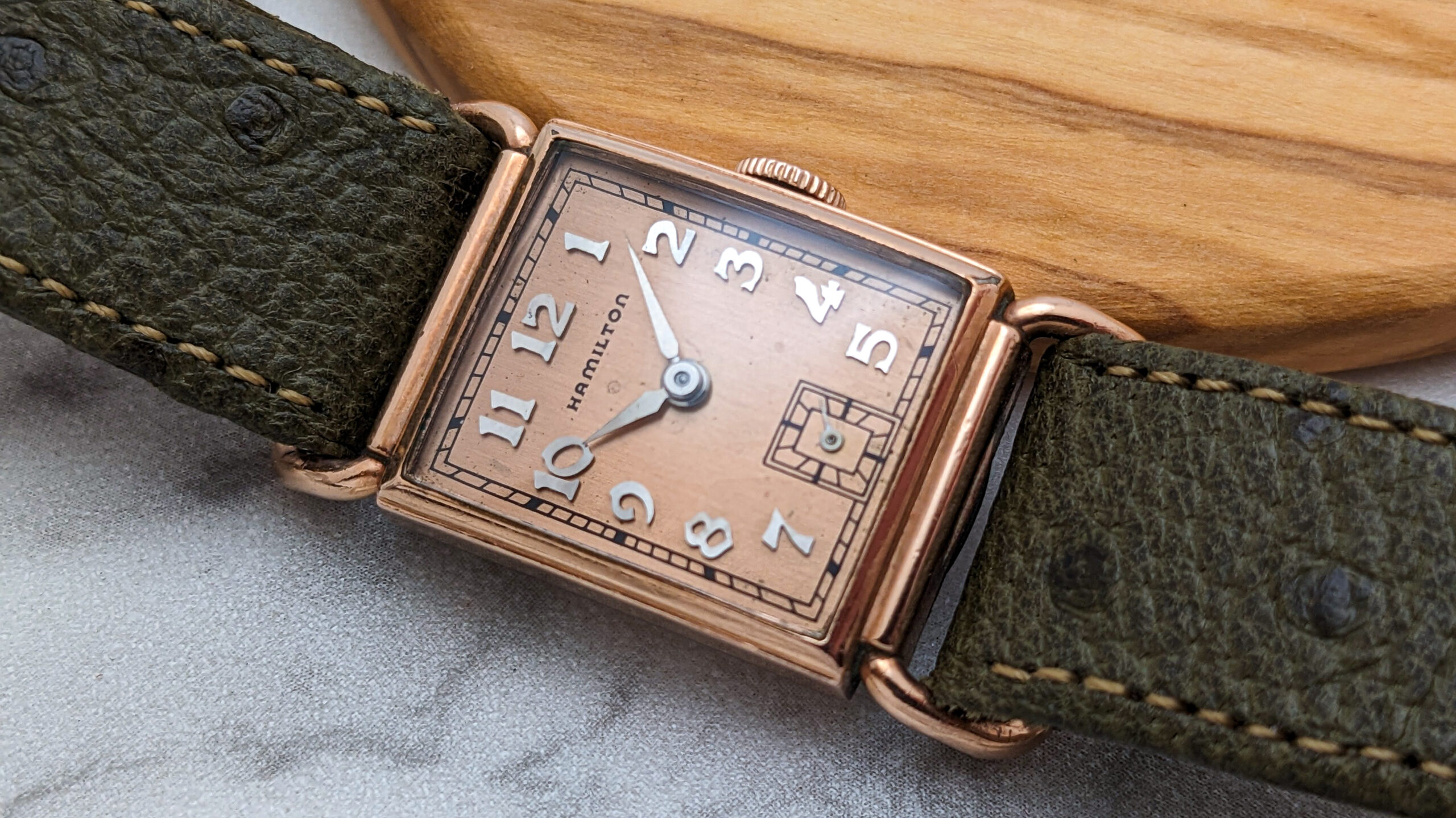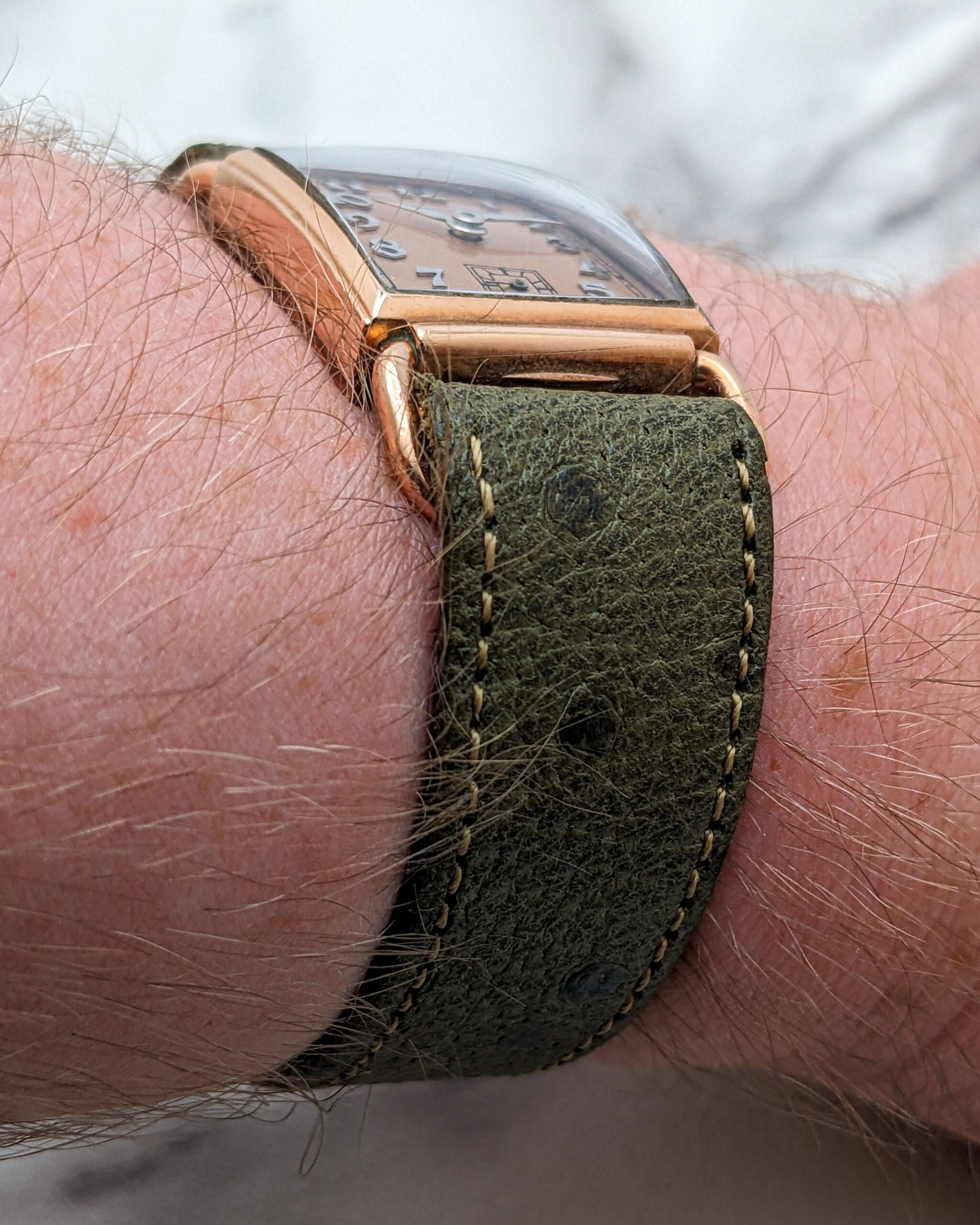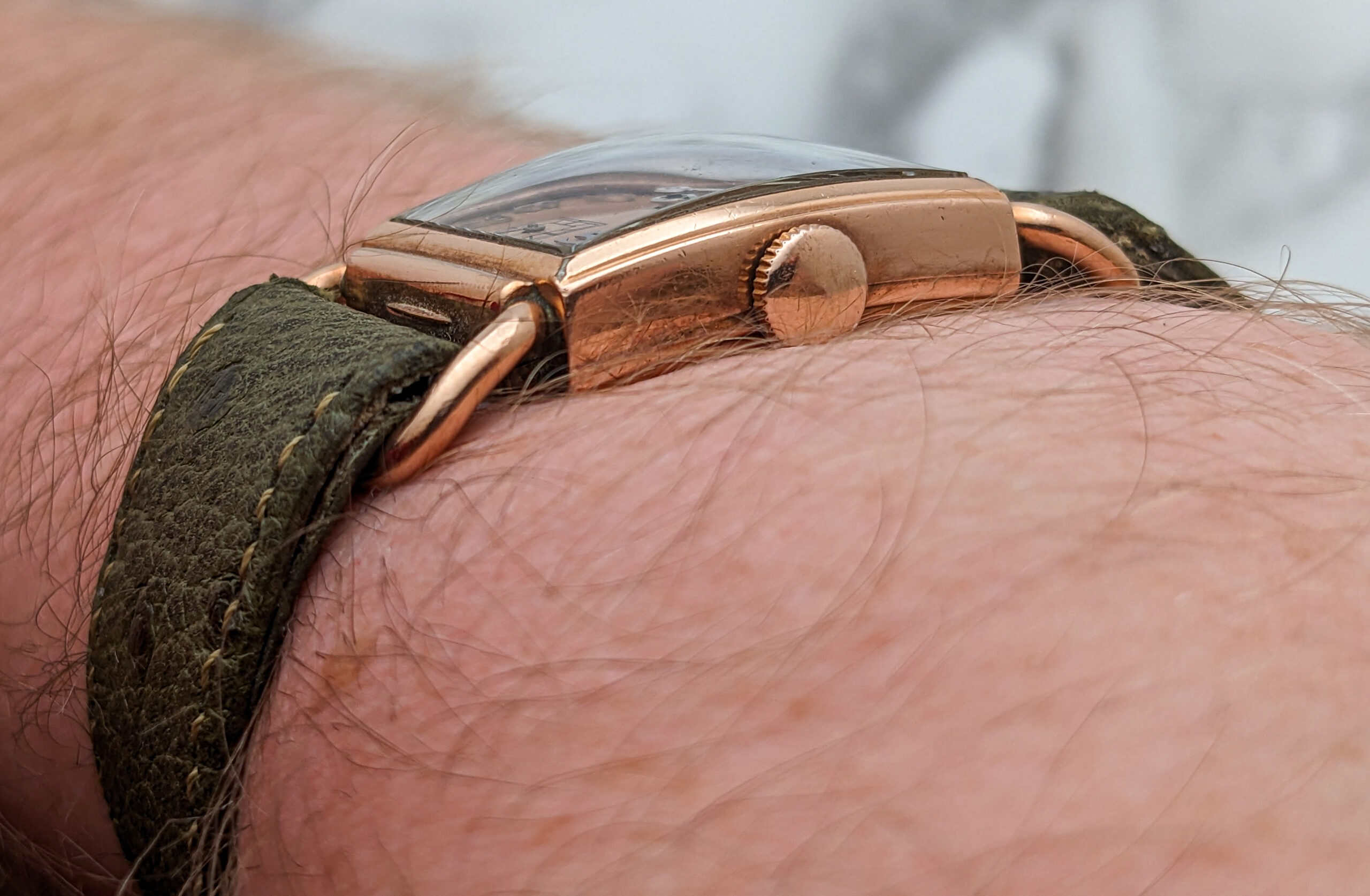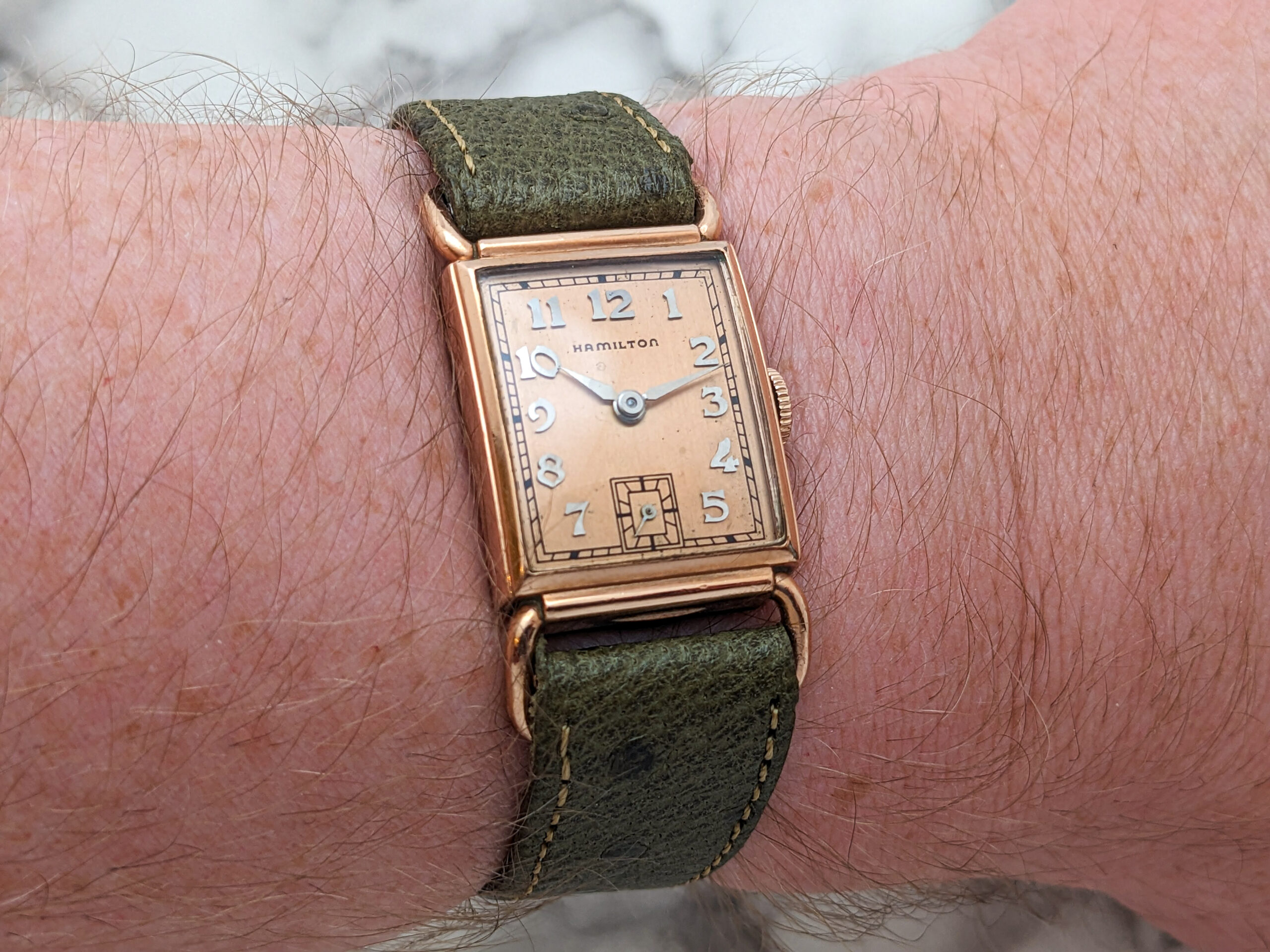 Editor’s Note: Thanks to aBlogtoWatch Contributing Editor Mike Razak for loaning me this timepiece, without which this article would not be possible.
Editor’s Note: Thanks to aBlogtoWatch Contributing Editor Mike Razak for loaning me this timepiece, without which this article would not be possible.
In many cases, watch enthusiasts are a remarkably conservative bunch when it comes to embracing new designs. By and large, the most popular watches in the community are those that have spent years, or even decades, proving themselves in the market, with a clear continuity between the original launch and the latest iteration. Conversely, releases that last only a few years before disappearing from the market are often lost to the sands of time, even among hardcore enthusiasts. These short-term releases, however, can often produce some of the most compelling stories in watchmaking. The first-generation Hamilton Essex is an excellent case study of how these short-term models can go on to develop some of the most interesting legacies in the watch hobby, particularly because of the ongoing mystery that surrounds them.

Although the Essex nameplate has a robust history in Hamilton’s archives, stretching through much of the ‘40s and ‘50s, the first model to bear the Hamilton Essex name had a short and troubled production run. Introduced in 1940 as a new addition to the brand’s stable of rectangular-cased designs, the Essex fell victim to production interruptions and delays related to World War II-era war production requirements in the United States (prior to the late ‘60s, Hamilton was a wholly American brand, with manufacturing centered at the company’s original headquarters in Lancaster, Pennsylvania). Not only was much of the brand’s manufacturing capacity shifted to make timepieces for the American military, but the limited civilian production infrastructure that was left would also frequently be stricken by material shortages. Although the more common yellow gold-filled variant continued to be produced in fits and starts until 1946, this particular model uses the brand’s proprietary 10K “Coral Gold” case alloy. With component metals in short supply at the height of World War II, the “Coral Gold” variant was quietly discontinued in 1942 and never revived. Debates among the Hamilton faithful offer wildly varied claims for the total number of “Coral Gold” Essex models in existence, ranging from a few thousand to as few as 10.
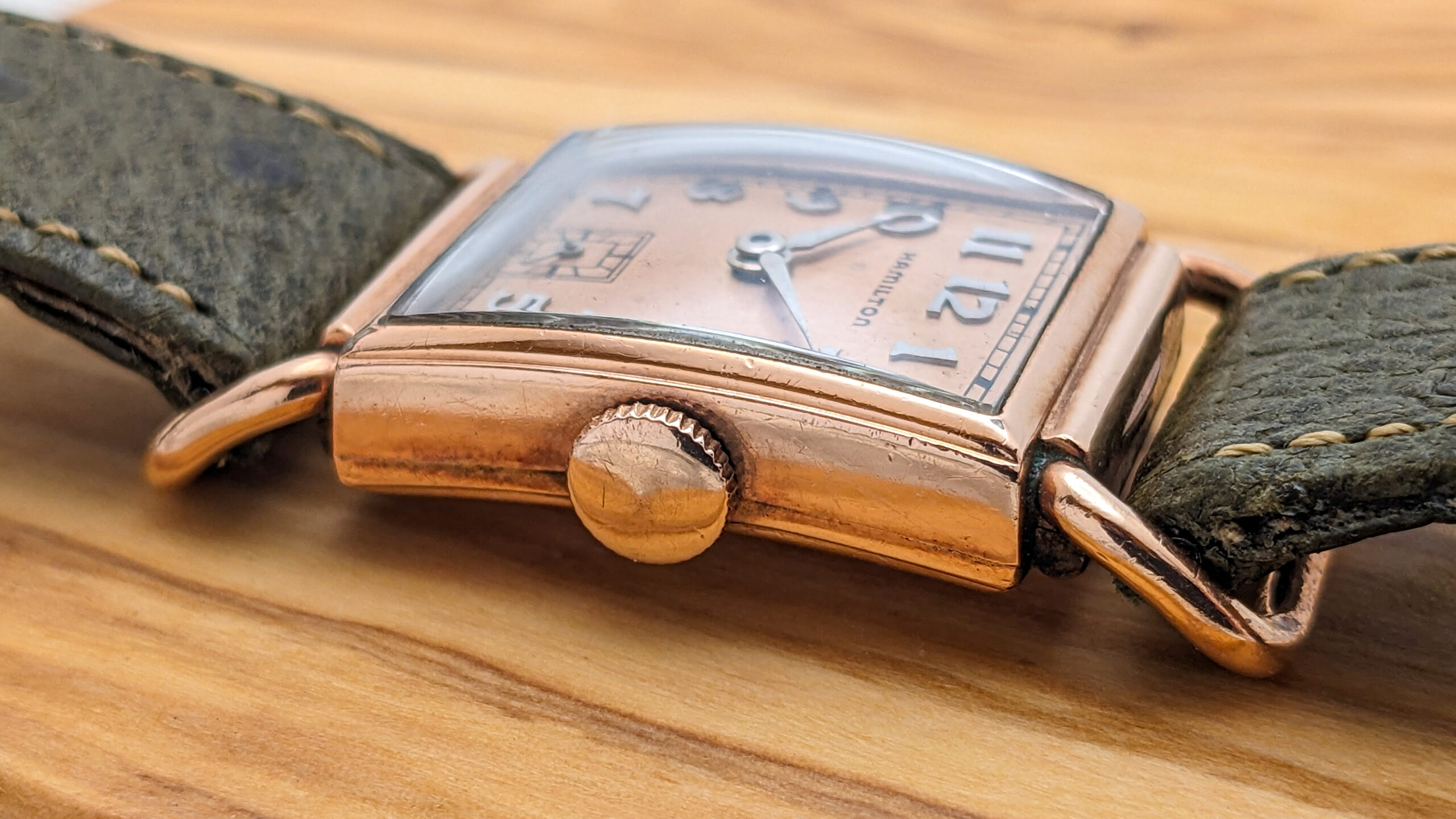
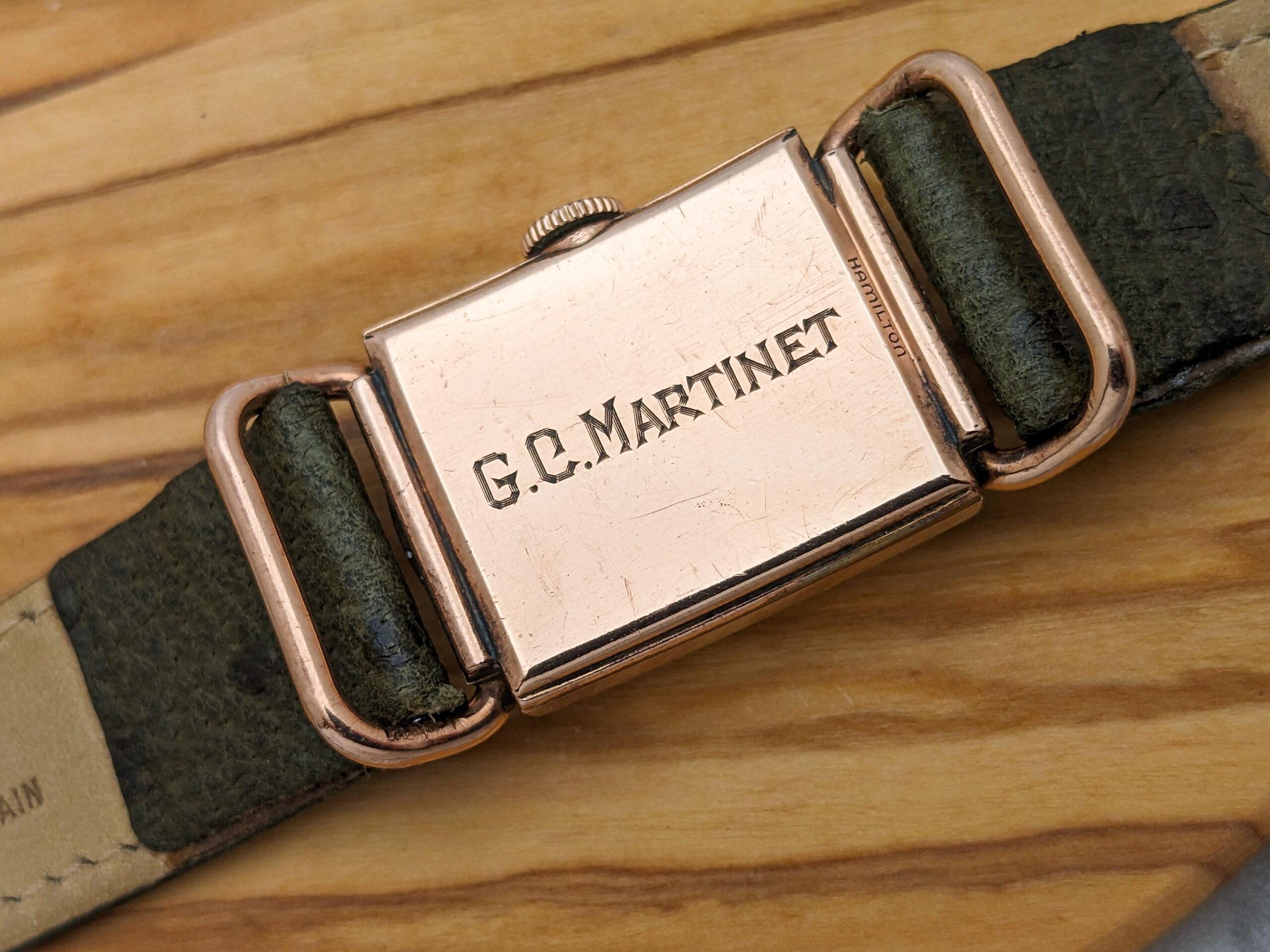
This leaves the “Coral Gold” Hamilton Essex as a real rarity among Hamilton’s back catalog, with a truncated production run and a mysterious, troubled history. Beneath this layer lies an impressively charismatic watch, however. While the majority of rectangular-cased watches both in the period and today take a “Tank-esque” approach to design, the Hamilton Essex’s 41mm-long by 21mm-wide case aims for something markedly different. The main rectangular case body may seem simple enough at first glance, with hard 90-degree edges and a basic smooth bezel, but when viewed from the side, this design reveals its hidden complexity. The entire main case body is gently curved to naturally hug the wrist, while the crystal takes on a matching arc that works to greatly soften the overall look. Of course, it’s the lugs that truly define this case, however. To the uninitiated, these may look like hinged solid wire lugs with retrofitted spring bars. However, these arcing attached lugs are solid metal, with loops that extend down past the strap attachment point to visually extend the watch’s wrist presence. These decorative extensions add a rounded warmth to the rectangular profile and help to give this watch a more robust stance on the wrist than the numbers would imply. Of course, the way these lugs interact with watch straps also limits the type of straps that can be used here. Any strap that’s excessively thick or stiff will tend to stick out far beyond the lugs, creating an ungainly floating effect on the wrist. On the other hand, thinner, more supple dress straps work like a charm with the Essex. Around on the caseback side, this particular Hamilton Essex offers up its second great mystery. Since this watch has passed through so many owners since its original sale in the early ‘40s, there’s no way of knowing who the “G.C. Martinet” mentioned in the engraving might have been. The obviously handmade third-party engraving adds a personal warmth to this piece that shines through over 80 years of aging.
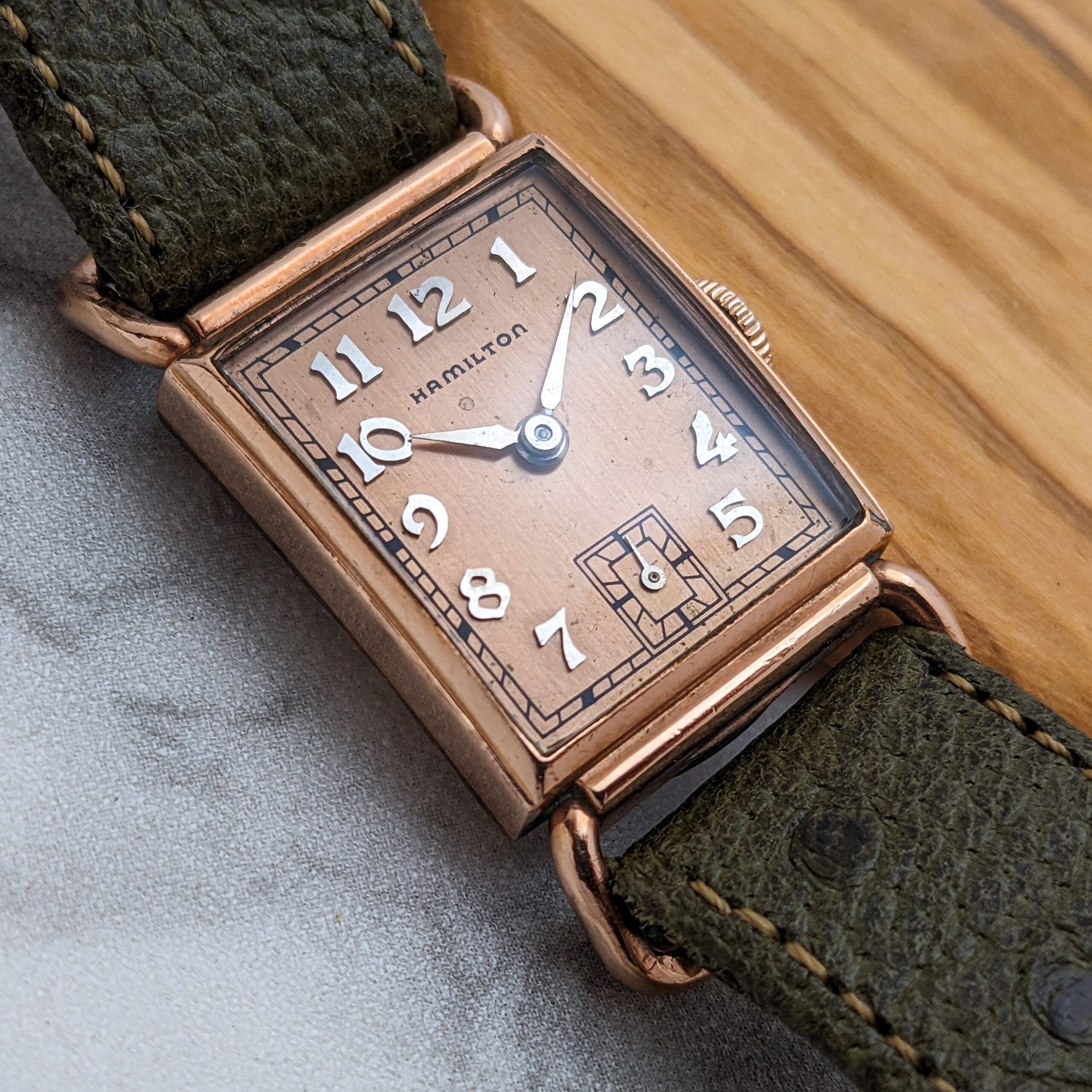
The dial of this Hamilton Essex is executed in classic ‘40s style. The main dial surface is vertically brushed “Coral Gold,” complete with a chemin de fer minutes track and an airy Art Deco-style rectangular printed scale for the small seconds subdial at 6 o’clock. Hamilton contrasts this warm, refined base with ornate applied Arabic hours numerals in rhodium plate, along with a matching set of razor-sharp alpha hands. Taken as a whole, it’s emblematic of the restrained, nuanced look of prewar luxury watchmaking, and it works as a dress watch as well today as it did in the ‘40s.
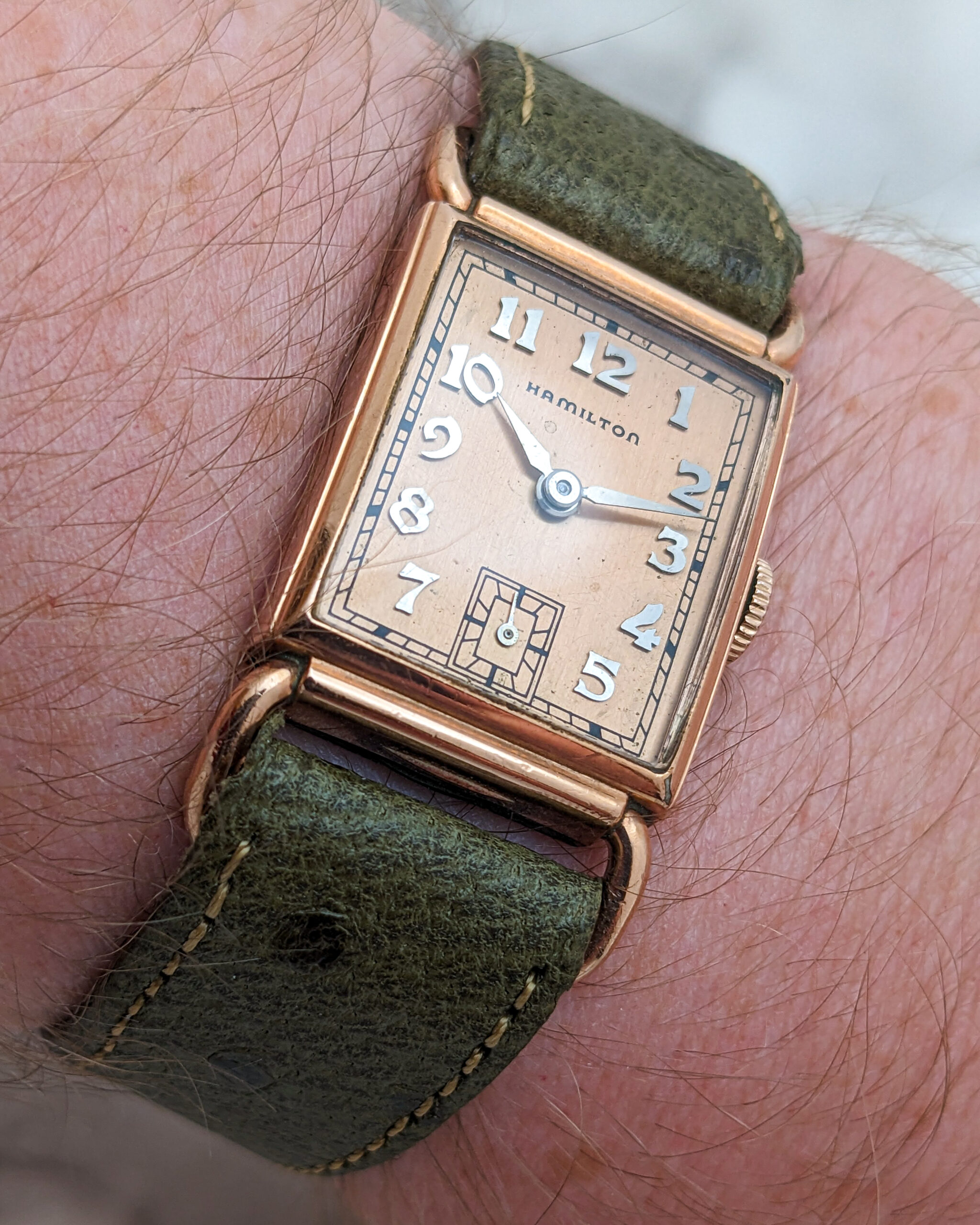
Although it only lasted for a handful of years in the brand’s catalog, the “Coral Gold” first-generation Hamilton Essex created a truly compelling variation on the classic rectangular dress watch, with a legacy shrouded in mystery. Although its story may not be as ingrained into watch culture as the titans of the industry, this little war-era design is an effective reminder to us as enthusiasts that it often pays to dig deeper and venture off the beaten path when collecting. While examples of the Hamilton Essex might not be available for the original ’40s-era $45 retail price, the Essex remains a remarkably affordable hidden gem, with solid examples available under $500 USD.

